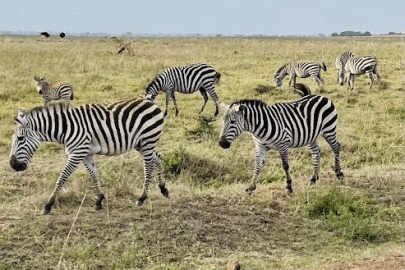
by Karen Telleen-Lawton, Noozhawk Columnist, Read the original column at Noozhawk.com
Why would an awareness group choose a rare date like February 29 as their special day? It’s the natural choice for Rare Diseases Day, celebrated annually on the final day of February.

Their mascot is another quirky choice: a zebra. The zebra’s role is familiar to those who attended medical school. (I did not.)
Medical students are taught to recognize common ailments, since that’s what afflicts most patients. “When you hear hoof beats, think horses, not zebras,” is the saying.
Yet across the United States, around 30 million people suffer from over 7,000 rare diseases. The combined effect of rare diseases is significant: more like an elephant in the room than a sunburned zebra.
Nevertheless, relatively little research has the goal of resolving rare afflictions. Drug companies often do not prioritize these “orphan diseases,” 80 percent of which are due to genetic disorders.
Due to their rarity, the diseases are challenging to treat or to cure. Relatively few patients are available for clinical trials, and obviously, relatively few patients have the disease and need the treatments.
However, the impact of drugs and treatments developed for rare disorders can be disproportionately large. Inquiry into rare diseases can generate new perspectives into the more common diseases. The benefits can be enormous.
One example is a rare metabolic disorder called familial hypercholesterolemia. Hypercholesterolemia patients have very high levels of cholesterols. They often suffer heart attacks at a young age.
Researchers studying hypercholesterolemia gained insight into the whole pathway of cholesterol metabolism. Important drugs like statins developed for hypercholesterolemia have driven the treatment of many high cholesterol conditions, not just hypercholesterolemia.
Hutchinson-Gilford progeria syndrome yields another case of large benefits. Progeria syndrome causes premature aging, such as hair loss, wrinkled skin, hypertension, hardening of the arteries, and heart failure.
Researchers identified a specific defective gene causing the syndrome. Insights into the aging process emerged from the identification of the defective gene.
So, not infrequently, the result of studying rare diseases is that researchers identify cellular and molecular pathways significant to treating other diseases. When scientists can pinpoint mutations on a particular gene, they can focus on that gene, working to understand the molecular pathways that control the cells’ biological functions.
Orphan disease research is important for insights into common diseases. Nonetheless, the primary issue is equity. Thirty million Americans, penciling out to 22 percent of families, want to be full participants in society. Eliminating barriers preventing them from education, work, and health and social care, allows them to participate in society, and society to benefit from their full participation.
Besides increasing research dollars for rare diseases, governments can help in ways familiar to many disadvantaged groups. Their priorities, according to the Rare Disease Day website, are:
1. Extending coverage to people living with a rare disease by promoting visibility, codification and diagnosis.
2. Including other services and adapting existing ones to the needs of the rare disease population.
3. Protecting the rare disease population from further financial hardship, including universal access health coverage.
From a lay person’s perspective, I would add a fourth: Consider naming diseases with pronounceable words so they’re more approachable.
Zebras are not “a horse of a different color” — they are unique. Likewise, recognizing and respecting people with their unique differences improves us all, as a society and as individuals.
Consider how the determination to succeed despite a rare disease can contribute to being a valuable employee or a thoughtful friend.
I plan to honor Rare Disease Day by wearing striped pajamas to bed on February 28. I may even wear them on March 1. At the very least, I’ll wear stripes and voice my support for families suffering rare diseases.

Karen Telleen-Lawton, Noozhawk Columnist
Karen Telleen-Lawton is an eco-writer, sharing information and insights about economics and ecology, finances and the environment. Having recently retired from financial planning and advising, she spends more time exploring the outdoors — and reading and writing about it. The opinions expressed are her own.

